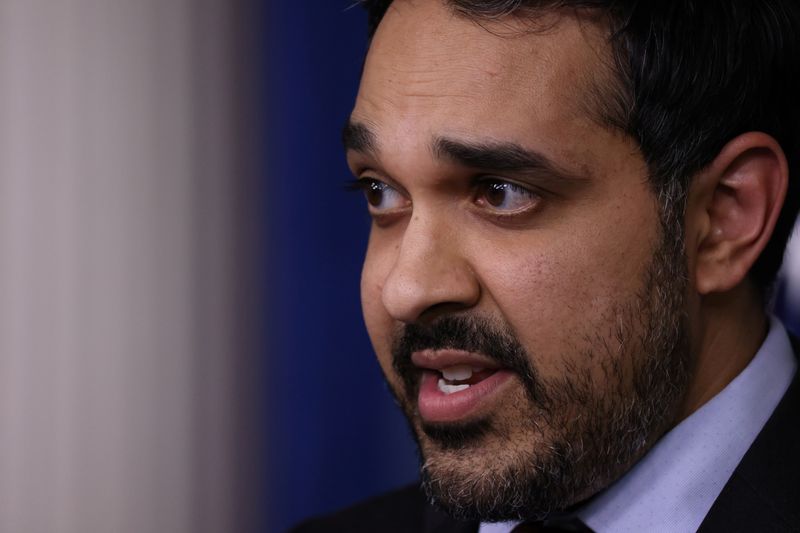
© Reuters. FILE PHOTO: Deputy Director of the National Economic Council Bharat Ramamurti delivers remarks during a press briefing at the White House in Washington, U.S., March 9, 2021. REUTERS/Tom Brenner
By Trevor Hunnicutt
WASHINGTON (Reuters) -The White House is considering proposals that would tax oil and gas windfall profits in order to provide a benefit to consumers struggling with higher energy prices, a U.S. official said on Thursday.
Bharat Ramamurti, the deputy director of President Joe Biden’s National Economic Council, said the administration has been examining U.S. Senate and House of Representative proposals that could hike taxes on energy producers in order to provide a subsidy to consumers.
“We are very much open to any proposal that would provide relief to consumers at the pump,” he said during a panel sponsored by the Roosevelt Institute, a think tank.
“There are a variety of interesting proposals and design choices on a windfall profits tax. We’ve looked carefully at each of them and are engaging in conversations with Congress about design.”
High energy prices have allowed large oil producers to record profits this year. Britain last week announced a 25% windfall tax on oil and gas producers’ profits, alongside a 15 billion pound ($18.9 billion) package of support for households struggling to meet soaring energy bills.
One proposal backed by 15 Democratic-aligned senators and several members in the House would levy a new tax on large oil companies quarterly for crude produced domestically or imported.
The revenue would be paid to consumers under a certain income in the form of a tax rebate that could amount to a few hundred dollars per year, but the bill faces uncertain prospects in Congress.
The discussions come as Biden has come under intense pressure to ease price pressures, especially for gasoline, ahead of November’s midterm elections with his Democratic Party’s control of Congress on the line.
“One thing you want to be aware of when you are looking at those types of proposals is how is it going to affect supply as well,” said Ramamurti. “I don’t think that’s an insurmountable hurdle, but it is an important question at a time when there’s clearly a supply issue.”
The U.S. economy had its strongest growth in nearly four decades in 2021, after the government poured trillions of dollars in COVID-19 relief into the economy, and the Fed kept borrowing costs near zero.
The rescue efforts helped drive unemployment down to 3.6% from its pandemic-era high of 15%, but also revved up consumer spending that has contributed, along with the war in Ukraine, to higher prices.
U.S. consumer price growth slowed in April as gasoline prices eased off record highs, suggesting that inflation may have peaked. Consumer prices were up 8.3% in April from the year prior, according to the Labor Department.
Source: Investing.com




























